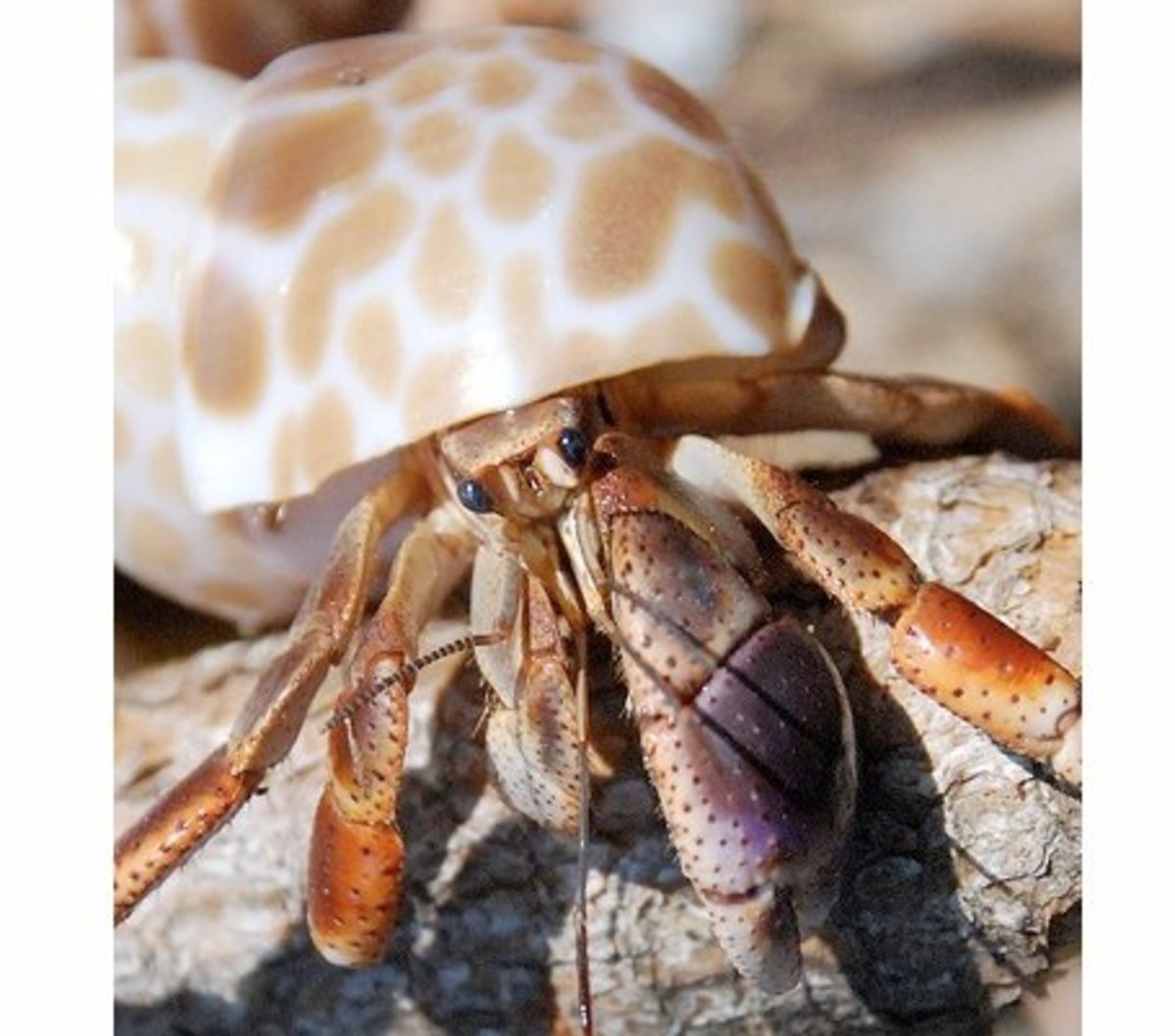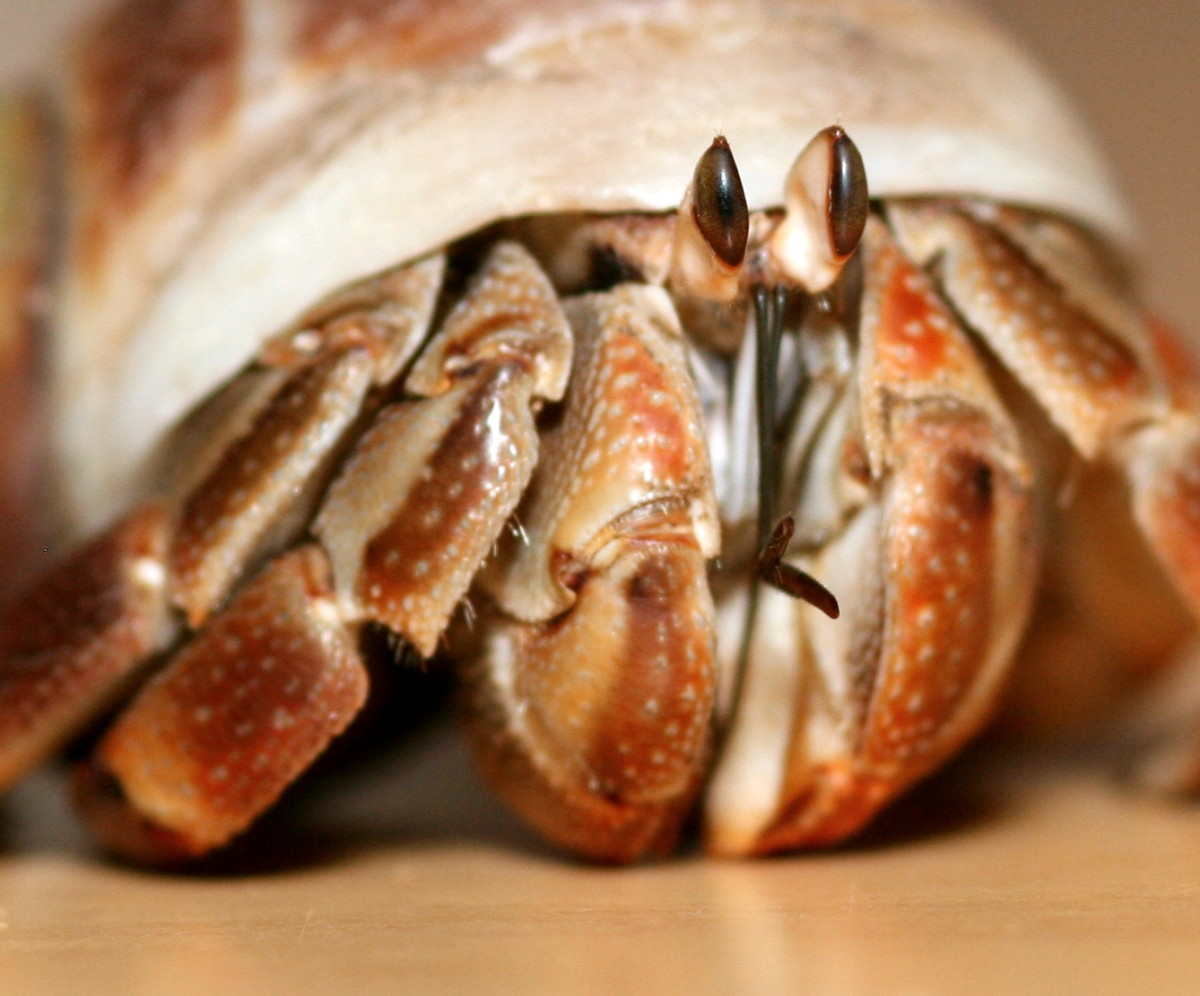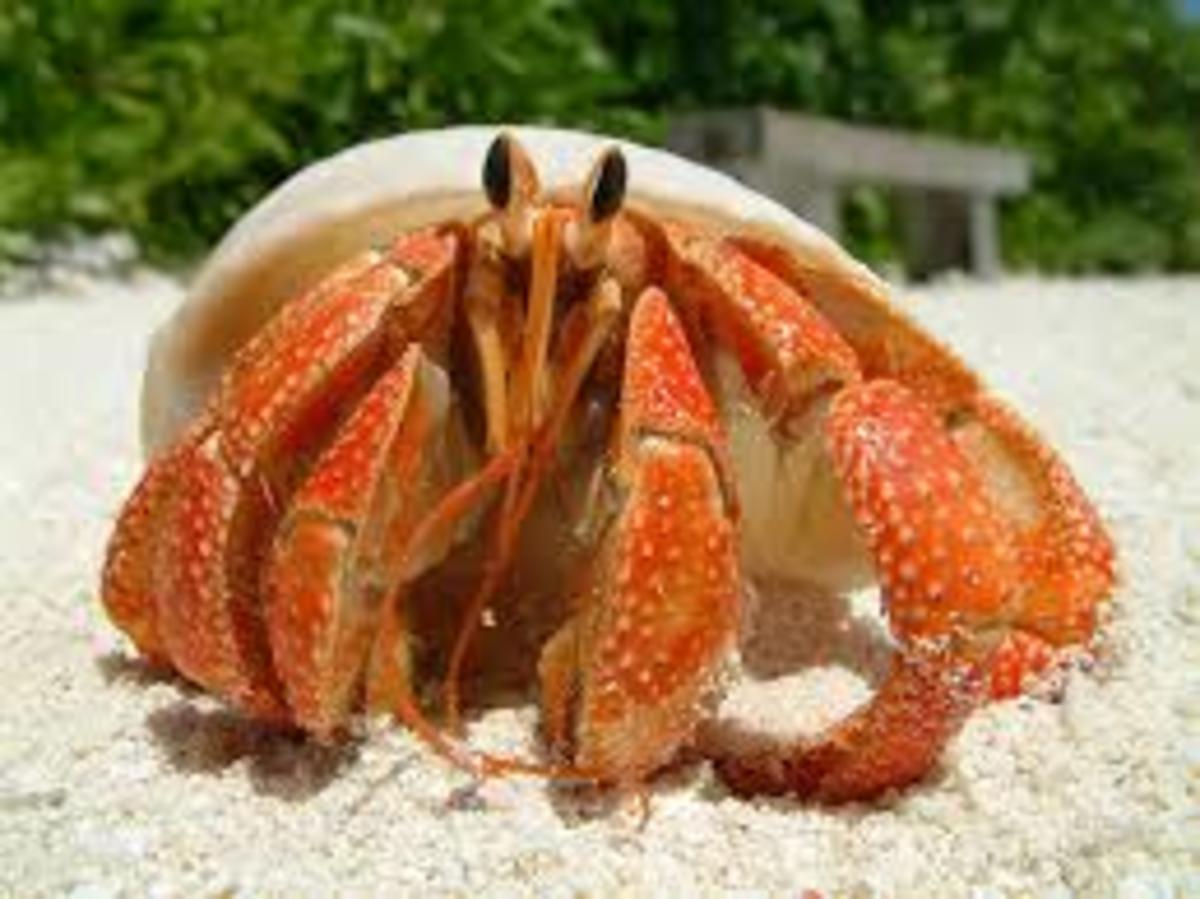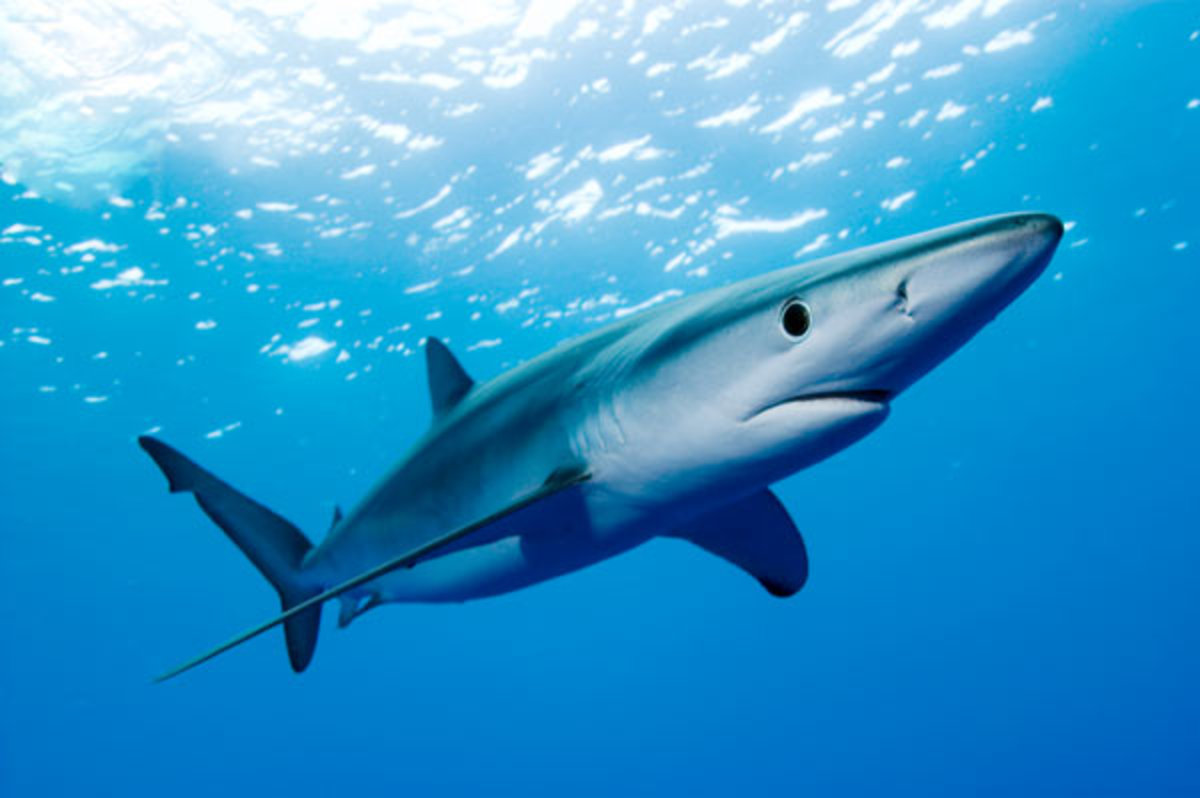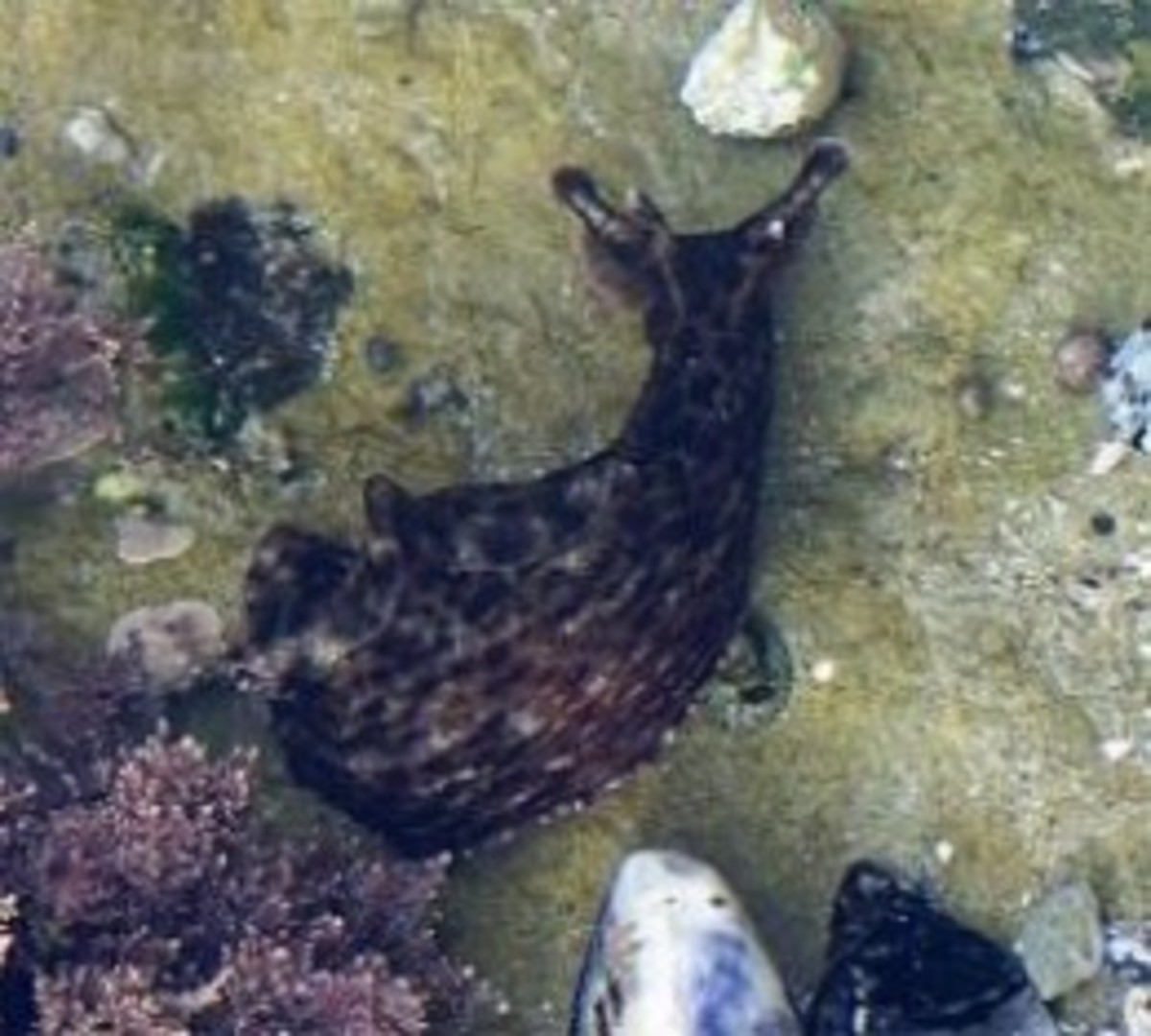- HubPages»
- Education and Science»
- Life Sciences»
- Marine Biology»
- Marine Life
How To Care For Hermit Crabs
Set up a proper hermit crab habitat for healthy, happy crabs.
When my kids saw the hermit crab kiosk at the mall, they just had to bring home one of these “cute” creatures for their new pet. While hermit crabs are very easy to care for and require little maintenance, the kiosk owner either failed to mention (or just plain didn’t know) some of their most basic needs. After our first hermit crab died an untimely death, I did some research so that our next crab would live a healthy, happy life in the best "crabitat" I could provide.
I'm happy to report that "round 2" of our hermit crab ownership is a success. We have three crabs living together in a roomy, humid, heated "crabitat." They are happy and healthy, and so far have lived with us for three years with no signs of problems.
What to Get:
10-gallon aquarium (or larger)
Bag of play sand (found in home centers)
Piece of plexi-glass to cover top of aquarium (also found at home centers)
Aquarium heating pad (found in the reptile section of the pet store)
Temperature/humidity gage (found in the reptile section of the pet store)
Two non-metal water dishes
Tap water conditioner
Small carton of aquarium salt
One non-metal food dish
Food for you crab (See #5 below)
Cuttlebone (found in bird section of pet store)
One or two “Hermie Huts” or other shelters
Climbing structure (rocks or driftwood work well)
Shells of various sizes (Crabs like to try on different shells, and will need larger shells as they grow.)
Spray bottle
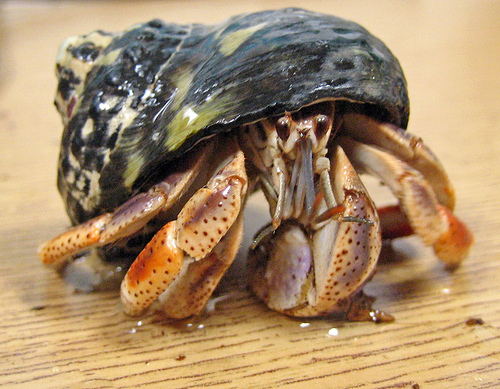
What to Do
- Realize that the term “hermit crab” is a misnomer. Hermit crabs are actually very social creatures and prefer living in groups. So do your crab a favor and get him a couple of buddies. Three crabs are just as easy and inexpensive to care for as one.
- Fill the aquarium 3-4 inches deep with play sand, or deeper if you have a very large crab. The sand should be deep enough that your crabs can dig down and completely bury themselves. Play sand is recommended because it is clean and sterile, yet much more economical than calcium-fortified reptile sand. When it comes time to clean out the crabitat, you won't feel so bad about throwing the sand away since it is very inexpensive. Add the cuttlebone to the crabitat to ensure your crabs get the calcium they need.
- Apply the heater to an outside wall of the tank and plug it in. These heaters are like mini heating pads, but they have adhesive on one side so they will stick to the side of the tank. I put mine on the back so that it doesn’t interfere with our view of the crabs in their tank. Some heaters go under the tank; follow the manufacturer’s directions. Apply the temperature/humidity gage inside the tank, in a spot where you can easily view it. Optimal temperature for your crabitat is 75-85 degrees F; optimal humidity is 70-80%.
- Place and fill the water dishes. One dish is for fresh water that has been treated with the water conditioner. Conditioned water is very important, as the chlorine and metals in unconditioned tap water can be fatal to hermit crabs. The other dish is for salt water, which you mix according to the directions on the aquarium salt package. Crabs must have access to both fresh and salt water at all times. Make sure the dishes are shallow enough that the crabs can climb in and out. Believe it or not, crabs can drown.
- Place the food dish inside the tank and add some food. Crabs do not eat much, and they do not need special crab food. Just a few of the foods crabs can safely eat are raw vegetables, peanut butter, popped popcorn, uncooked oatmeal, crackers, dog kibble, and dried shrimp (found in the fish section of the pet store). Stay away from dairy, highly processed or sugary foods. Remove old food and supply fresh food each day.
- Place the shelters, climbing structure and extra shells in the tank.
- Place your hermit crabs inside their new home.
- Place the plexi-glass over the top of the tank, leaving an opening of about one or two inches on one end for fresh air. The plexi-glass cover is important for maintaining proper humidity. If the humidity level dips below 70%, use the spray bottle to mist some conditioned water into the tank, and recover the tank immediately. Covering your tank with a screen or leaving it uncovered will not provide enough humidity, as it allows all the moisture to escape. Your tank should be humid enough that the sand stays moist. If you could make a sandcastle with it, that means it is perfect. If the sand is dry and runs through your fingers without sticking together, then your crabitat is too dry and needs more humidity.
- Clean the tank every few weeks or every month, tossing out old sand and replacing with new.
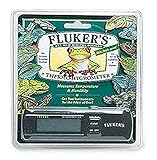
Additional Important Things to Know about Hermit Crabs
Never try to pull or force a crab out of its shell.
If your crab buries itself under the sand, do not dig it out or disturb it. It may be molting and will come up when it is good and ready. Molting is a sensitive process, and most crabs will do best if left alone and allowed to bury themselves in moist sand. One of our crabs stayed under the sand for weeks on end. We feared that it had died. However, several months later it emerged with a shiny new exoskeleton. If your crab molts, leave the the shed exoskeleton in the tank. The crabs need to eat it! Yes, that's gross, but it is completely normal and provides lots of calcium and nutrients.
If it's time to clean your crabitat but you've got a crab that's buried and molting, use a spoon to scoop out the little crab poopies and any old food as best you can. Wait until the crab has emerged before throwing out and replacing the sand.
Crabs love to climb and need plenty of exercise, as well as a stimulating, interesting environment. They also can be very shy and need a shelter to hide in to feel secure. Give your crabs several sheltered hiding places, as well as plenty of things to climb on and explore. However, there's no need to spend big bucks on special crabitat driftwood. Gather rocks and small branches from your yard (or shells if you live near the coast). These items cost nothing. Another free idea is to rearrange the crabitat every time you clean it. The crabs will enjoy explorng their "new" environment.
Hermit crabs require a more specialized environment than some pet store clerks will lead you to believe. However, once the initial cost and setup are taken care of, hermit crabs are low-maintenance, inexpensive pets.

